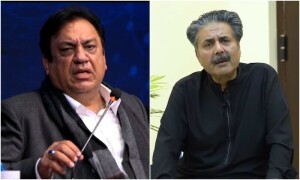BY not respecting the verdict of the people in the 1970 elections and by launching the Pakistan Army against its own people in East Pakistan, the military leadership had created a crisis of frightening magnitude.
Having decided to solve a political issue through military means, they should have foreseen war with India and prepared for it, first by ensuring the defence of Dhaka, the focal point of strategy for both armies, and then invoking the perfectly sound concept of defending the east from the west as neither army was strong enough to fight on two fronts some 1,600 kilometres apart. Therefore, the Indian army had rightly adopted a strategic defensive posture in the west and a strategic offensive posture in the east.
The Indian army had correctly identified Dhaka as their objective, but knew that it would be difficult to capture quickly if it was defended in strength as the terrain around it favoured the defender. Therefore, something had to be done to force the Pakistanis to uncover Dhaka. In this they were helped no end by Lt Gen Niazi’s obsession with the ridiculous strategic thought of defending every inch of East Pakistan.
Yahya Khan let East Pakistan and Kashmir pass into history.
Consequently, commencing Nov 20, 1971, the Indian army, in line with Niazi’s obsession, launched small-scale offensive operations all along the 2700km border, to impose on Pakistan’s Eastern Command an exaggerated forward defensive posture. Niazi took the bait and rushed his limited forces towards the border. In the event, he diluted his forces in space and uncovered Dhaka.
Resultantly, on Dec 14, the Indian troops entered Dhaka unopposed. By the end of November 1971, the eastern front was in tatters. Niazi’s strategy of holding space everywhere led him to lose all control of events. If he had shortened the front in time he would have had enough regular troops to defend Dhaka for at least six months.
The Indian army’s build-up in the east began in July 1971 which also entailed shifting some formations from the west.
This build-up constituted aggression and called for a pre-emptive strike in the west, in much the same way as Israel had done in 1967 following the build-up of Arab forces in Sinai.
Consequently, in September 1971, when the Indian defences in the west had not yet been fully energised, a strategic offensive in Ravi-Chenab corridor could have cut off India-held Kashmir from the Indian mainland by securing line Samba-Madhopur Headworks, then exploiting towards Jammu.
From the geo-strategic, operational and logistics standpoint, this was the most suitable corridor for the offensive which would have altered the course of war. Gen Yahya Khan could have mustered four infantry divisions, three armoured brigades, and elements of SSG for the offensive, while keeping two infantry divisions, two armoured divisions and elements of SSG as army reserves.
But when he opened the western front on Dec 3, 1971 he wasted three infantry divisions and an armoured brigade on operations that had no strategic significance (a division each against Chhamb, Jaisalmer and Poonch, and an armoured brigade in Chhamb).
All three operations failed, as did the counter-attacks against the foothold gained by India’s 1 Corps in Jarpal-Barapind area in Shakargarh salient in Ravi-Chenab corridor, also with tragically heavy losses. When the war ended on Dec 16, 1971, the army reserves in the west, acquired at great cost to the country, remained unutilised, which in a short duration war is an unpardonable act.
By launching a timely pre-emptive offensive Yahya Khan stood a good chance of taking Kashmir and salvaging East Pakistan. By not acting in time, he stood no chance at all. He let this opportunity pass, and with it, let East Pakistan and Kashmir pass into history. That afternoon in Dhaka the Pakistan forces had lost its honour in battle.
Wars are won by those whose job it is to take superior strategic decisions at the right time and by those whose job it is to translate these decisions into superior tactical actions at the right point in time and space. The military leadership that can achieve this harmony between strategy and tactics will seldom lose.
Sadly, the hidebound Pakistani leadership that planned and directed the 1965 and 1971 wars and conducted battles was found wanting in this. They lacked dynamism, flexibility, resilience and initiative, and were steeped in conformism and convention. Hence, the mistakes made by them were paid for in blood.
Yahya Khan, who was wholly responsible for the failure of Operation Grand Slam in 1965, had squandered away the opportunity to fight and win the most important battle of his career — the battle for Pakistan.
The writer is a former armour and SSG officer.
Published in Dawn, December 20th, 2015












































